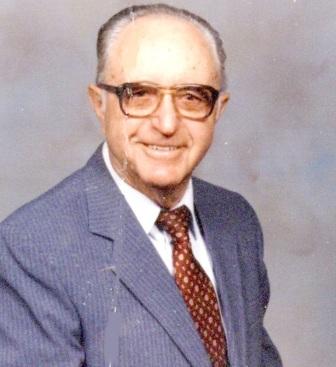Olvis R. Bird

Foil: 28 Panel: 2 Column: 2 Line: 28
Wall of Honor Level: Air and Space Sponsor
Honored by:
Ms. Anita Rankin
Olvis R. Bird was born on 16 November 1915 in Yantis, TX. After early years in farming, Bird joined the Civilian Conservation Corps at Chiricahua National Monument in Arizona. The Air Force aggressively recruited him, saying that better planes were being built in California to replace their inadequate aircraft. Bird responded, "Then I had better go to California to help build those planes."
In 1940 he moved to Los Angeles, attended Warren Aeronautical School, and was hired by North America Aviation in Englewood. Bird first assembled out-board wings on the T-6 Trainer, then worked on the B-25 Mitchel Bomber and P-51 Mustang. He married Marlene Geddie, also from East Texas. With World War II, the pressure was on North American to produce 30 P-51 Mustangs a day and Bird helped meet this goal. After the war, Bird transferred to Experimental Dept. 9, helping build the first B-45 bomber, the FJ1, and FJ2. Next he went to the Downey and Long Beach plants to modify and rebuild the T-6 trainer.
In 1951 Bird was transferred to the Columbus plant, moving to Ohio with his wife and two young daughters. Here he continued to modify T-6 trainers, was promoted to management, worked in Dept. 9 and seconded to Dept. 17 to help solve production problems on the F-86 and start production on the F-100. He and one other man built the first ejection seat. He helped build a refueling tank and the first duct inlet for the T2J. Bird began supervising in the machine, wood, and welding shops on the night shift, also supervising a crew to make parts for the B-70.
He helped Dept. 56 conduct flight tests and Dept. 9 conduct drop tests on the A3 J/Ra-5c Vigilante to improve the structure, and helped build and prepare the OV-10A Bronco for flight tests. Later he helped to rework parts and plan how to mill honeycomb into contoured curves for space vehicles, and for several years supervised work on vertical take-off aircraft, retiring in 1978.
After a career spanning 37 years, Bird says, "I am very pleased that I was able to contribute to giving the Air Force, Navy, and NASA better aircraft to fly."
Wall of Honor profiles are provided by the honoree or the donor who added their name to the Wall of Honor. The Museum cannot validate all facts contained in the profiles.
Foil: 28
All foil images coming soon.View other foils on our Wall of Honor Flickr Gallery
